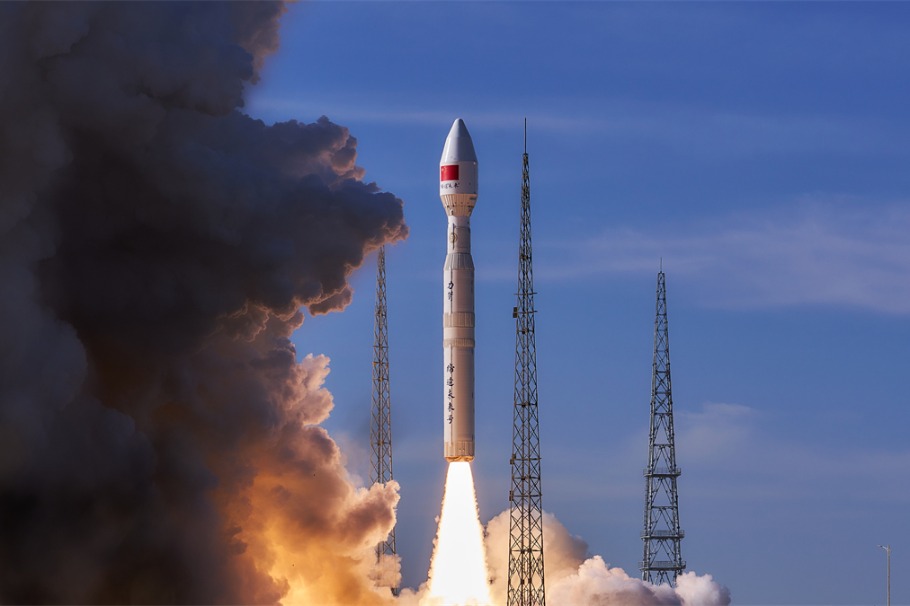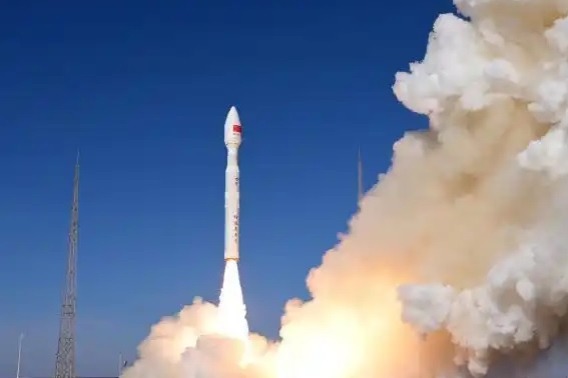The news that made waves last year


The sky's the limit
By Zhao Lei
Zhang Di, a senior rocket scientist, spends most of his time researching and developing the next generation of the Kuaizhou series of carrier rockets.
As one of the vice presidents at the Fourth Academy of the China Aerospace Science and Industry Corp, Zhang is not only responsible for the success of the rockets, the biggest family of solid-propellant carrier rockets in China, but also the academy's commercial space business.
"This year we have a tight schedule for Kuaizhou rocket launches; we will launch four Kuaizhou 1As in the space of one week, and the Kuaizhou 11 will also make its maiden flight to place six satellites into orbit," he said, speaking on the phone from Wuhan, capital of Hubei province.
"We are also making preparations for the Hainan 1 satellite project. In 2019, we will use Kuaizhou rockets to lift three Hainan 1 optical satellites into space."
The company began developing the Kuaizhou series in 2009, looking to target government clients who it believed would require inexpensive, quick-response launch vehicles to handle emergencies, such as damaged satellites, in space.
Realizing the enormous potential of the Kuaizhou family in China's burgeoning commercial launch market, the company has already sent three of the rockets into space.
The company's academy is testing the Kuaizhou 11, which will have a liftoff weight of 78 metric tons and the ability to place a 1-ton payload into a sun-synchronous orbit at an altitude of 700 kilometers. It will also be able to send a 1.5 ton payload into a low-Earth orbit.
In addition, engineers have already started designing the next-generation Kuaizhou 16 and Kuaizhou 21 rockets, Zhang said.
According to the academy, the Kuaizhou 16 will have a diameter of 3.5 meters and will be able to place large satellites-weighing as much as 5 tons-into low-Earth orbits.
With a diameter of 4.5 meters, the Kuaizhou 21 will be the widest and tallest rocket in the family.
Possessing a launch capacity similar to that of the United States' Falcon 9 Full Thrust, it will be capable of sending a 20-ton spacecraft into a low-Earth orbit, meaning it will be powerful enough to transport supplies to future space stations or ferry robotic probes to distant planets.
The Fourth Academy will begin testing the world's largest solid-propellant rocket engine, designed to power the Kuaizhou 21, this year.
It will have a diameter of more than 4 meters and liftoff thrust of more than 1,000 tons,
In addition, the Fourth Academy is constructing the Wuhan National Space Industry Base, covering 68.8 square kilometers, in Wuhan's Xinzhou district.
The academy will invest 1.7 billion yuan ($258 million) to build production and assembly facilities for Kuaizhou rockets at the plant.
It plans to make about 20 rockets at the base every year to exploit lucrative opportunities arising from the thriving commercial space market, according to Zhang.
- Photographer captures wild mandarin ducks in Guizhou
- Infrared cameras and drones record Tarim red deer in Xinjiang
- Beijing issues alerts for snowstorms and road icing
- Beijing district recovers nearly 100 million yuan in scam losses
- China's immigration hotline adds French language support
- Zootopia 2 fans fuel hazardous trend in online snake purchases




































